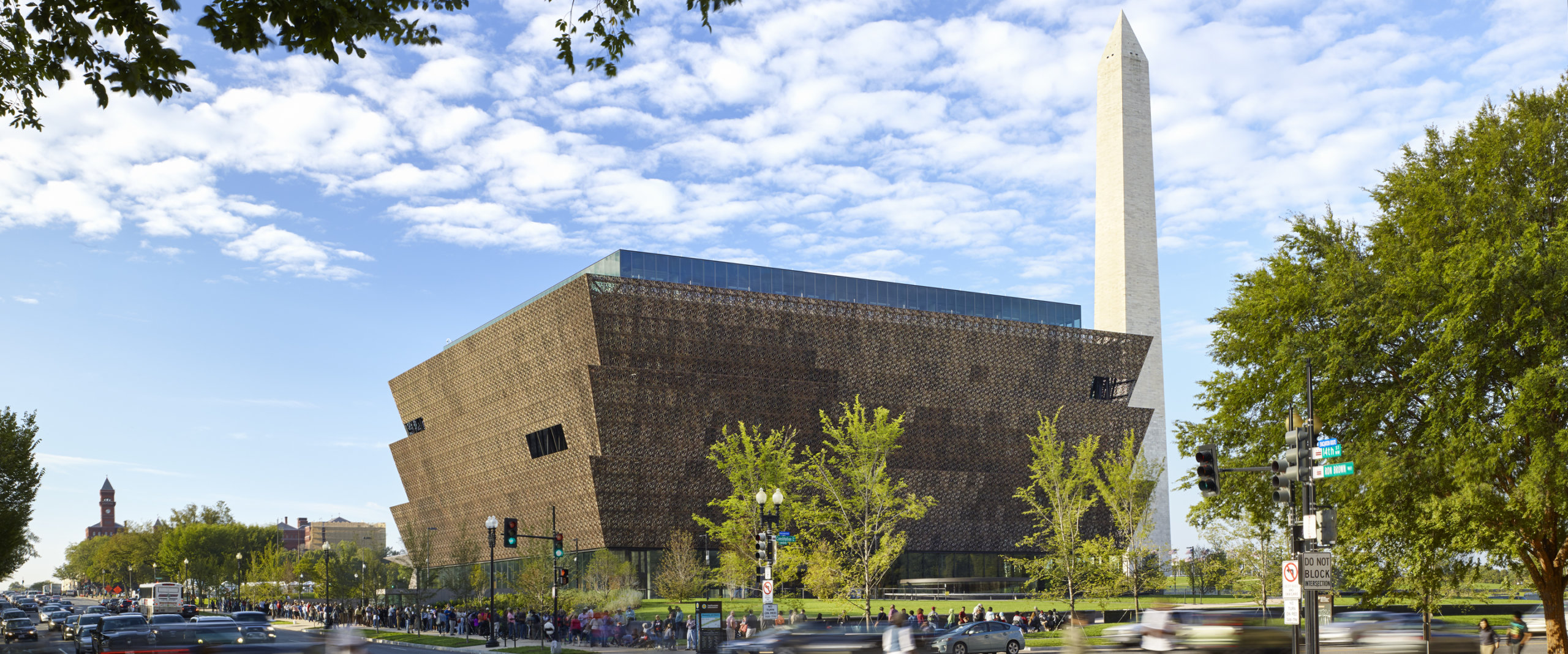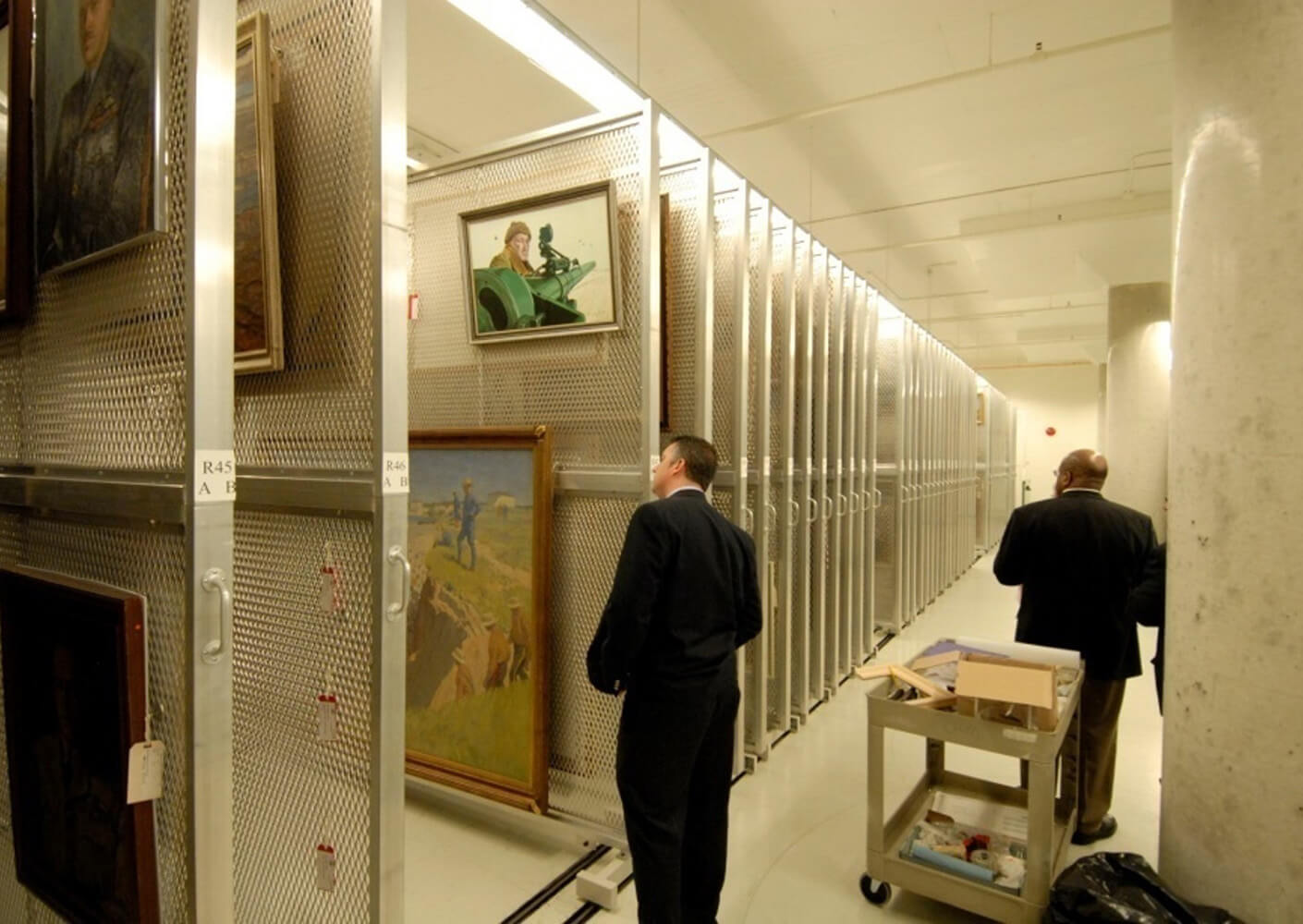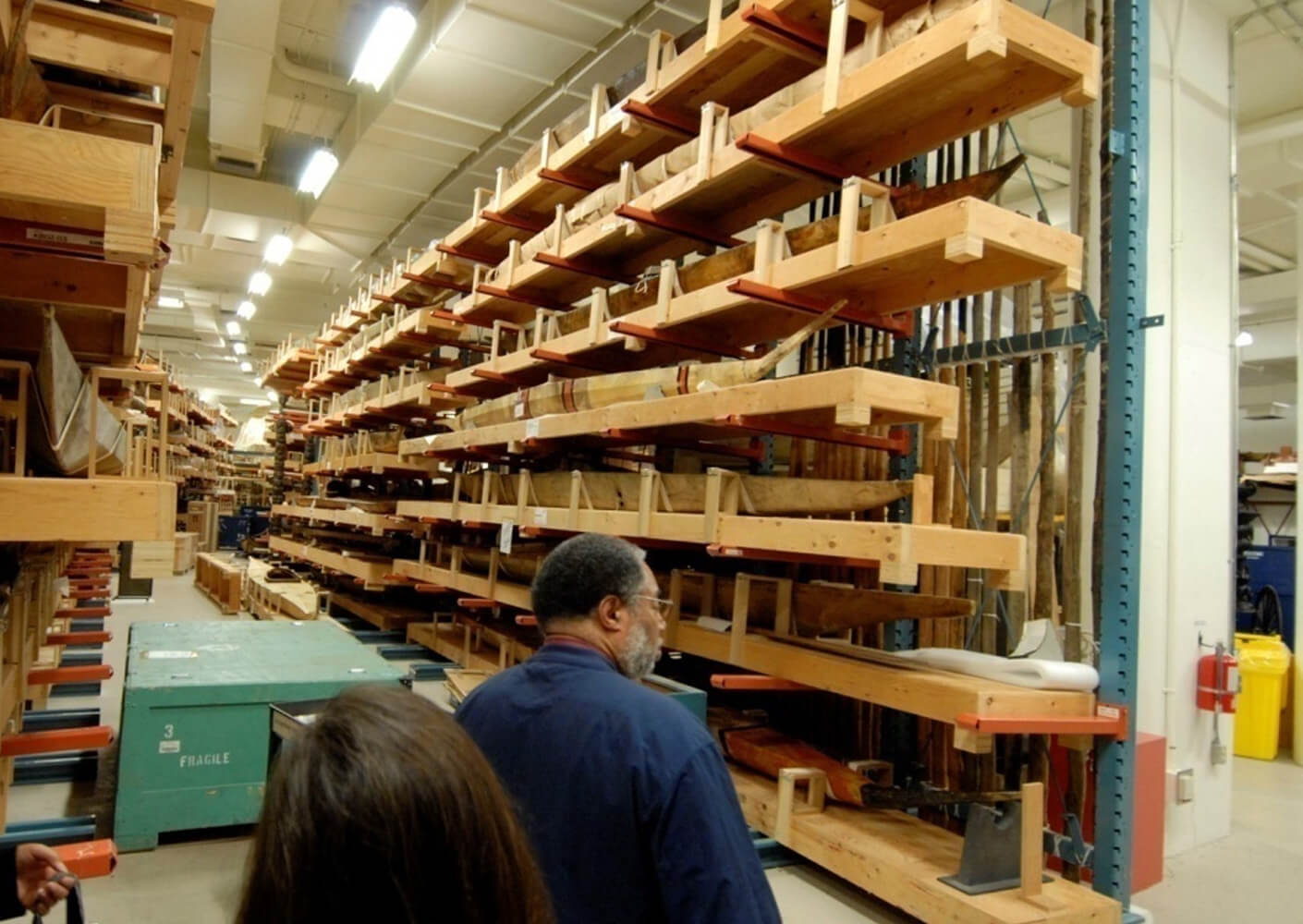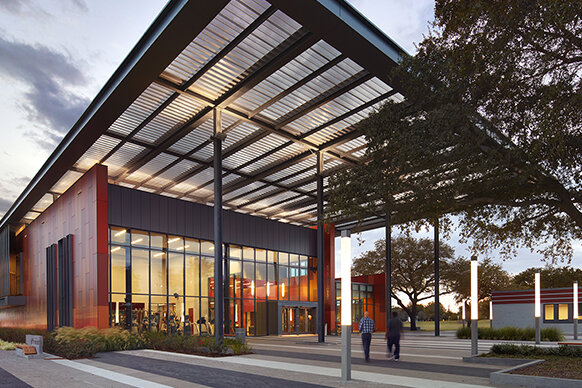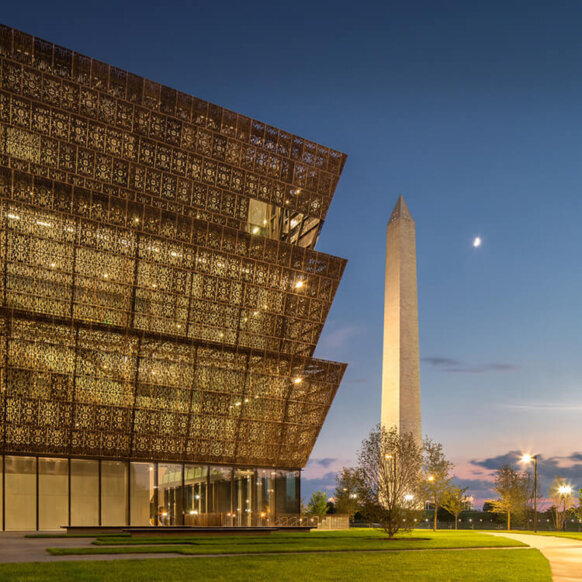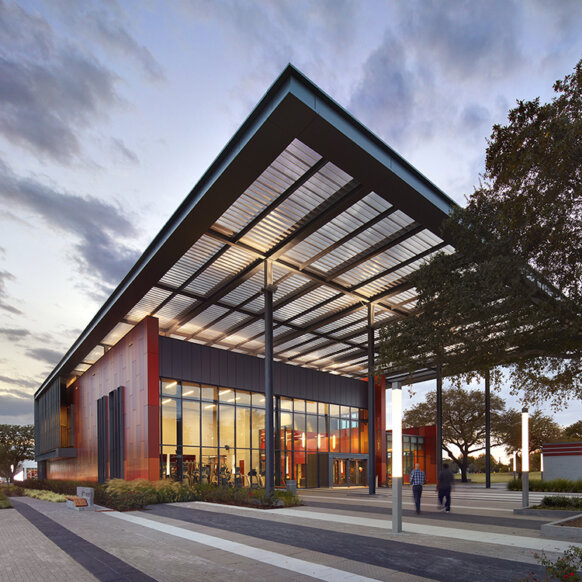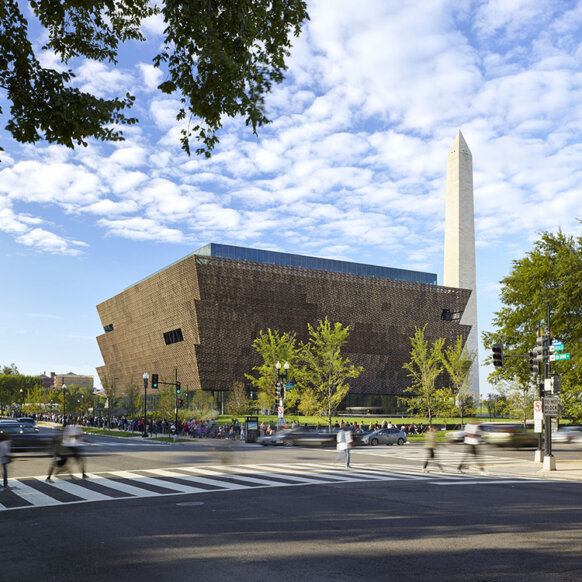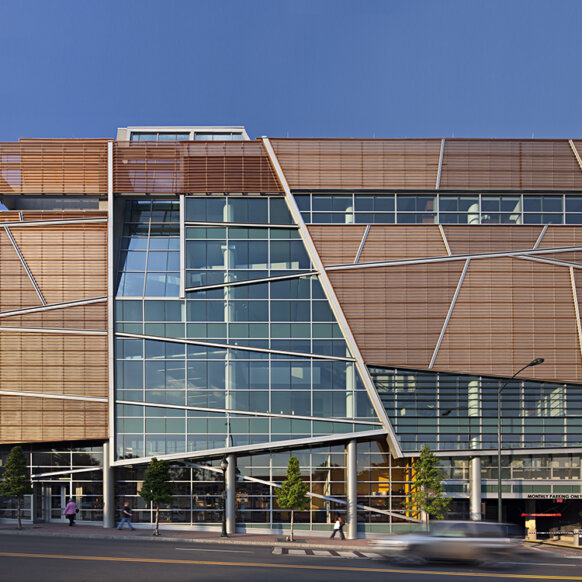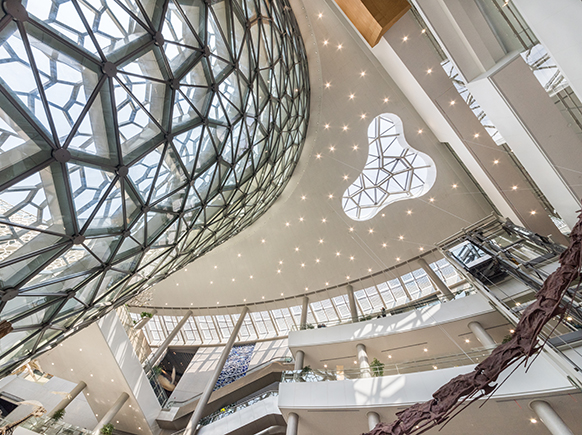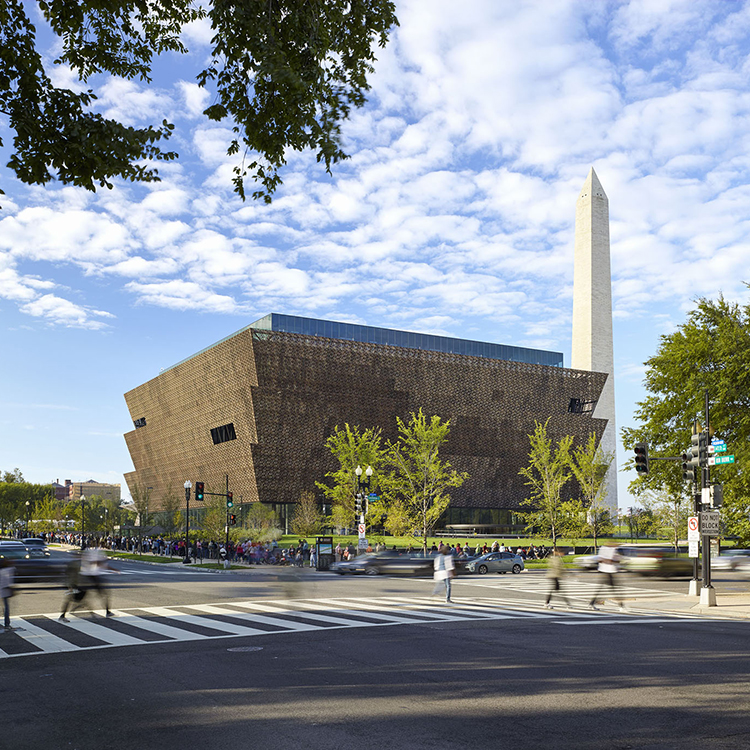
National Museum of African American History and Culture
The Smithsonian Institution’s National Museum of African American History and Culture (NMAAHC) is the result of a decades-long journey toward the commemoration of black history and culture. The building, located on the National Mall, establishes a strong connection to both its unique site and America’s long-standing and often overlooked African American heritage.
The NMAAHC rethinks the role of civic institutions in the 21st century, offering new modes of user experience and engagement. It presents a new form of museum: one that prioritizes cultural narrative and identity and that gives form to untold stories, establishing an empowering emotional context for positive social change. As such, it operates simultaneously as a museum, a memorial, and space for cross-cultural collaboration and learning.
Architectural Collaboration:
Freelon Adjaye Bond/SmithGroup (FAB/S)
Adjaye Associates is the Lead Design Architect. The Freelon Group is the Architect of Record. Davis Brody Bond and the SmithGroup are the Architecture Team.
The Freelon Group is now Perkins&Will.

The corona at the top of the caryatid was the key design driver for the museum’s three-tiered exterior form. With angled walls reaching upward, this iconic building profile presents a distinctive and complementary presence among its neighboring structures on the National Mall.
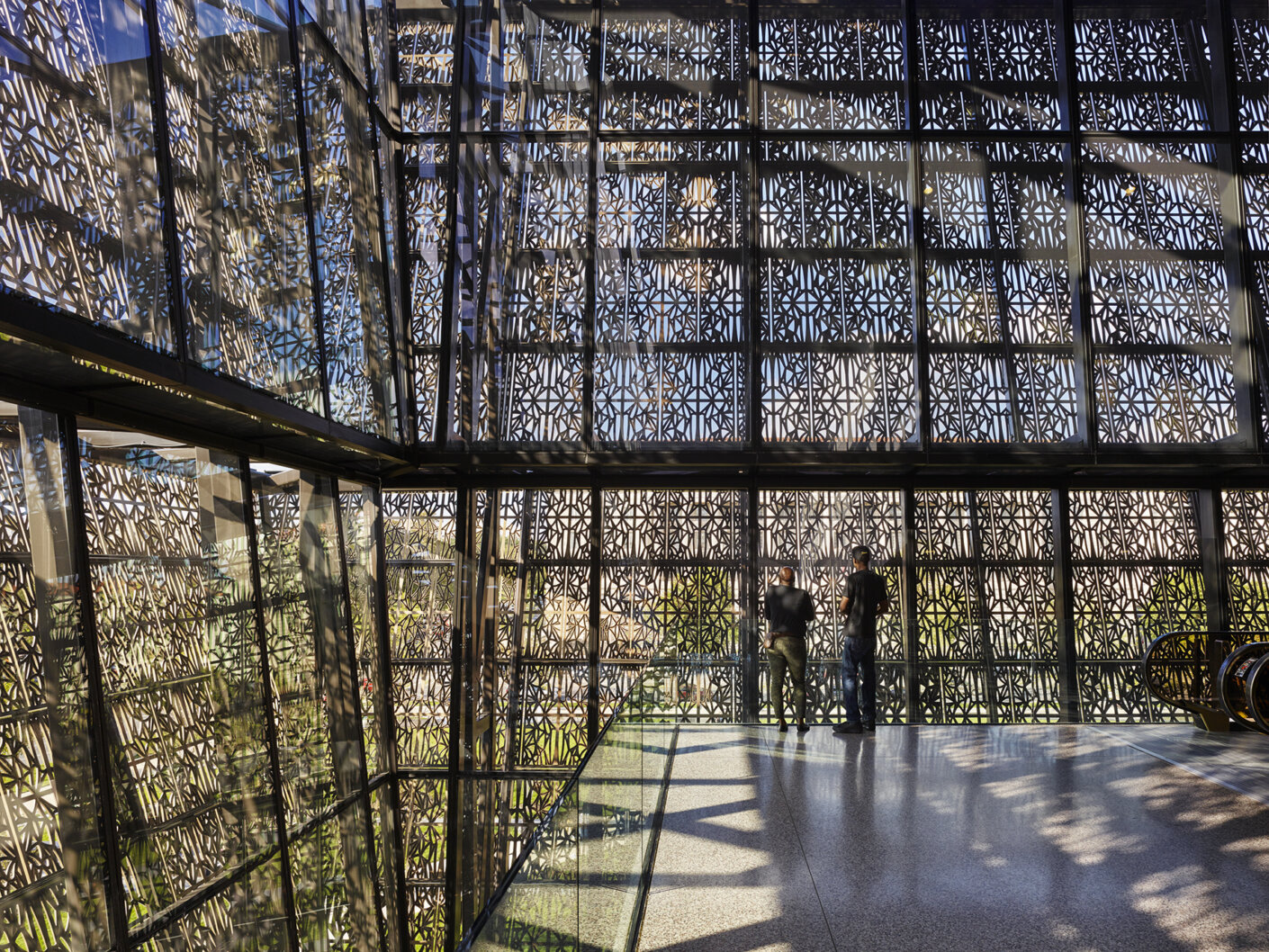
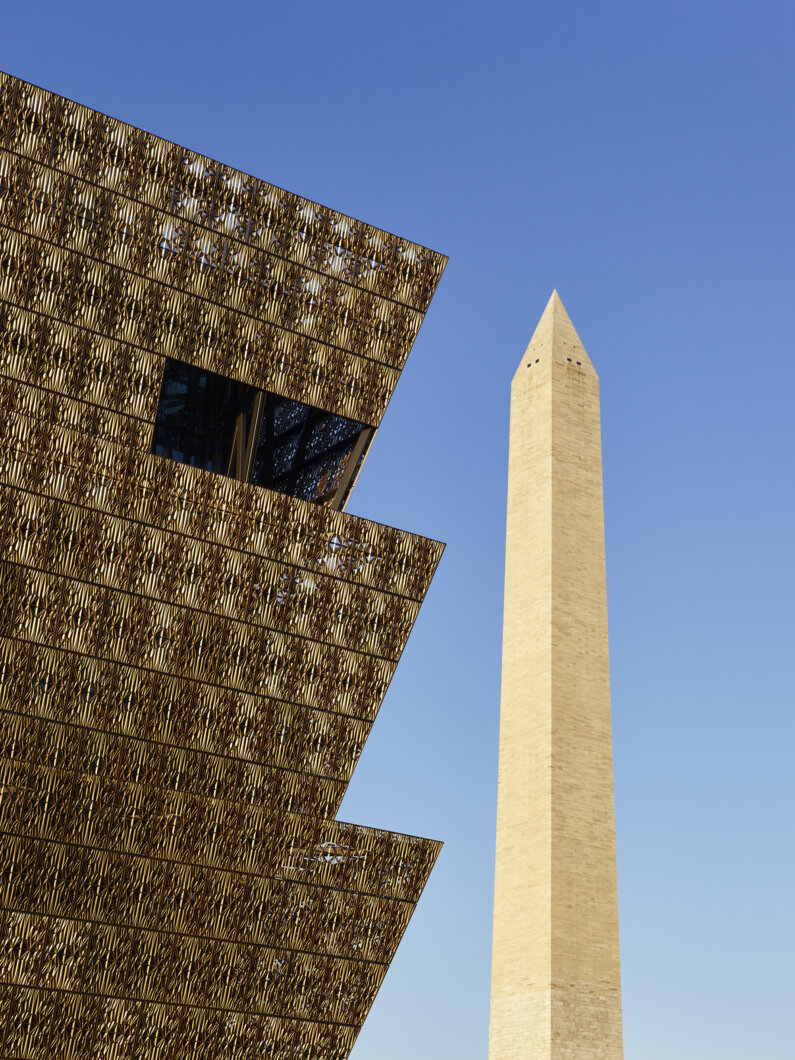
Several prominent artifacts are exhibited in the space in order of historical timeframe, allowing viewers to understand their juxtaposition in time without the use of a graphic timeline. Of note, a ballast recovered from a confirmed slave ship, a restored segregation-era rail car, two slave-era cabins, and the Angola Guard Tower form exhibits in the space.
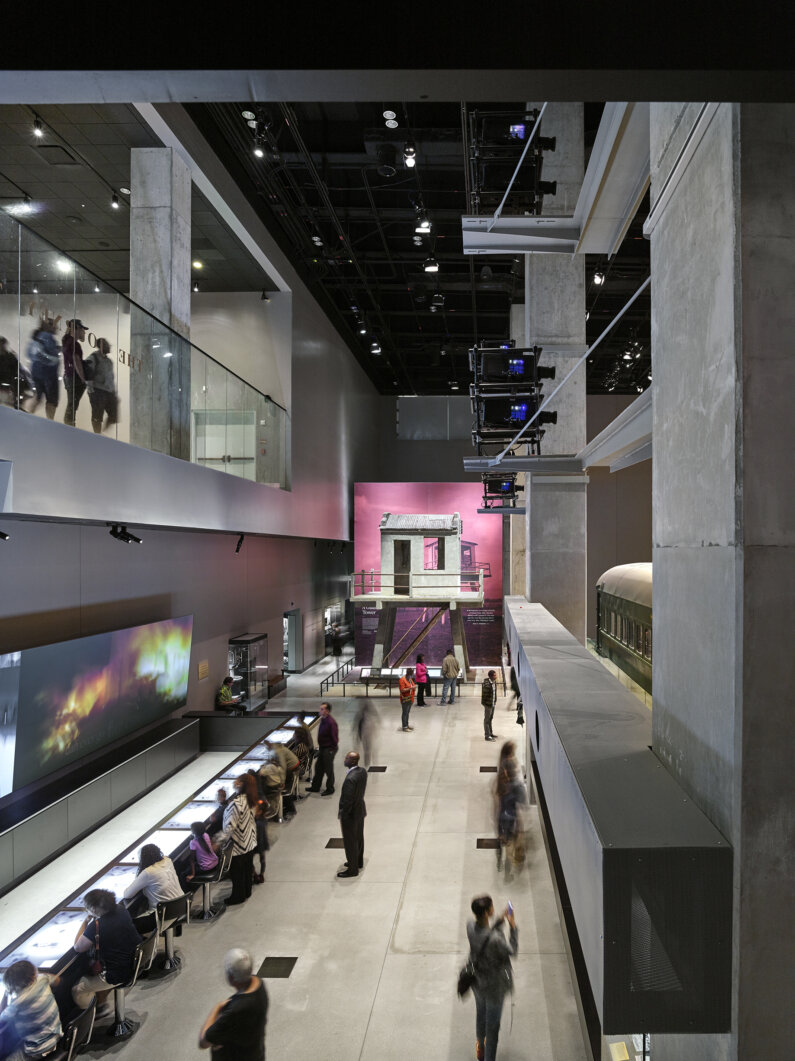
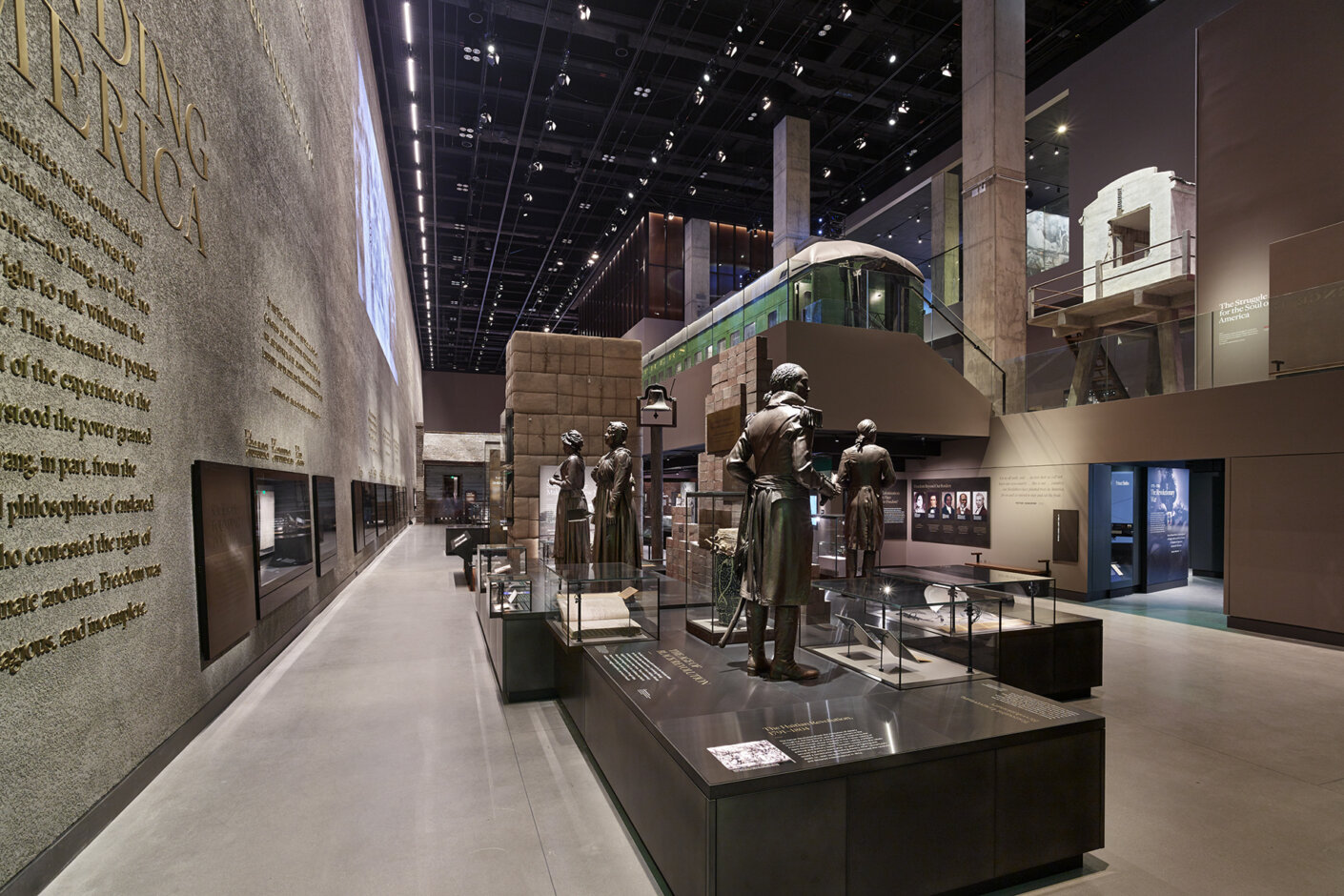
Technology was implemented in ways that are not readily apparent. The Contemplative Court showcases a cylindrical cascade of water flowing from an elliptical skylight 45 feet above. This engineering and design challenge focused on “invisible” technology to allow for an emotionally refreshing experience many patrons need as they make their way through potentially disturbing content.
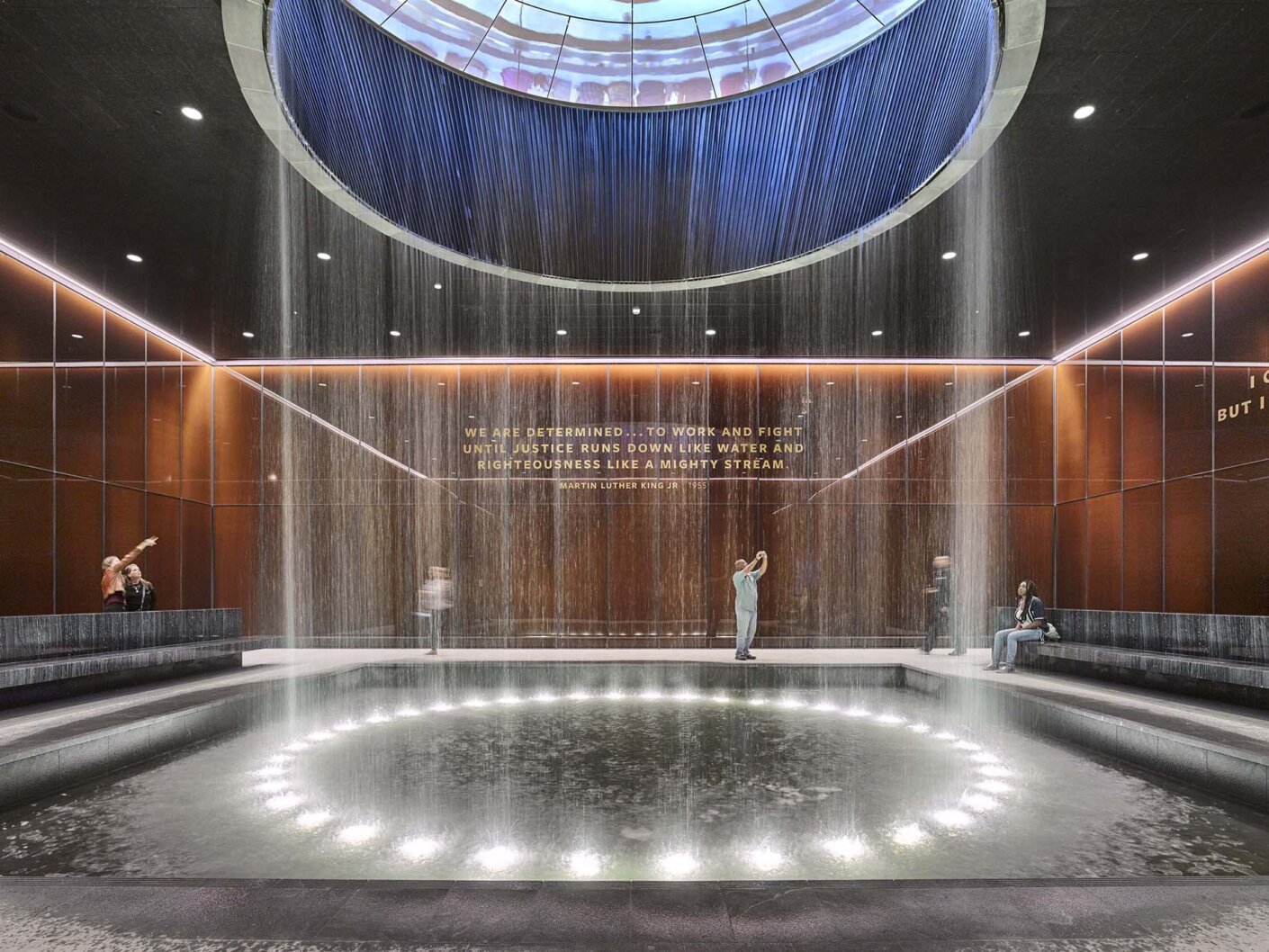
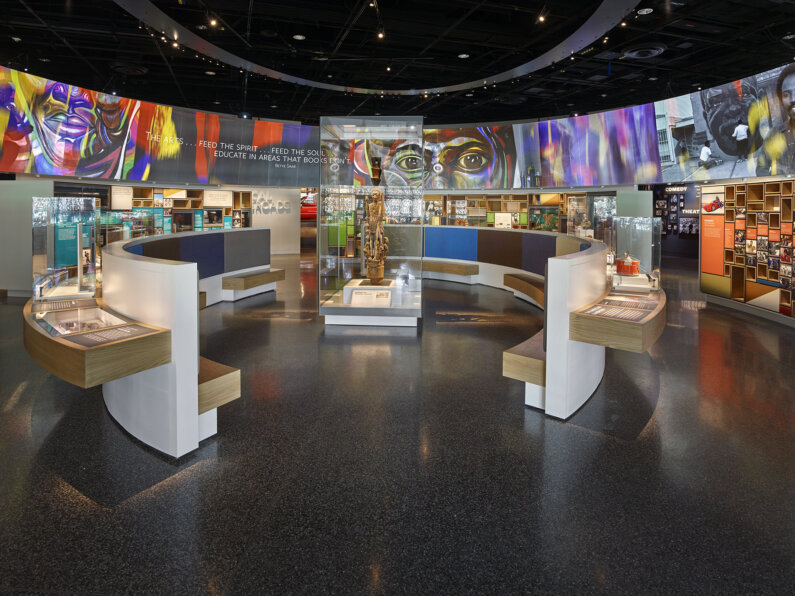
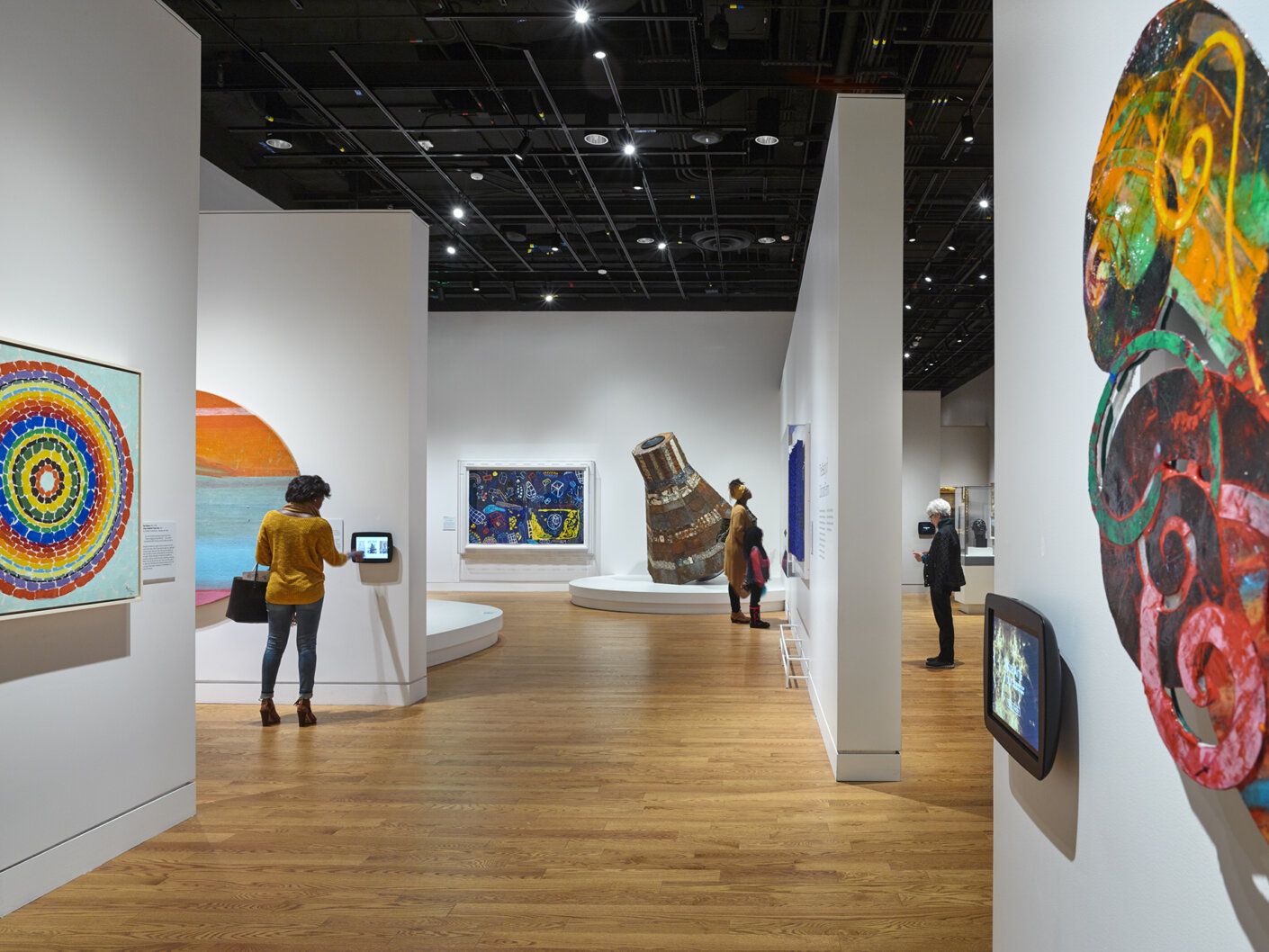
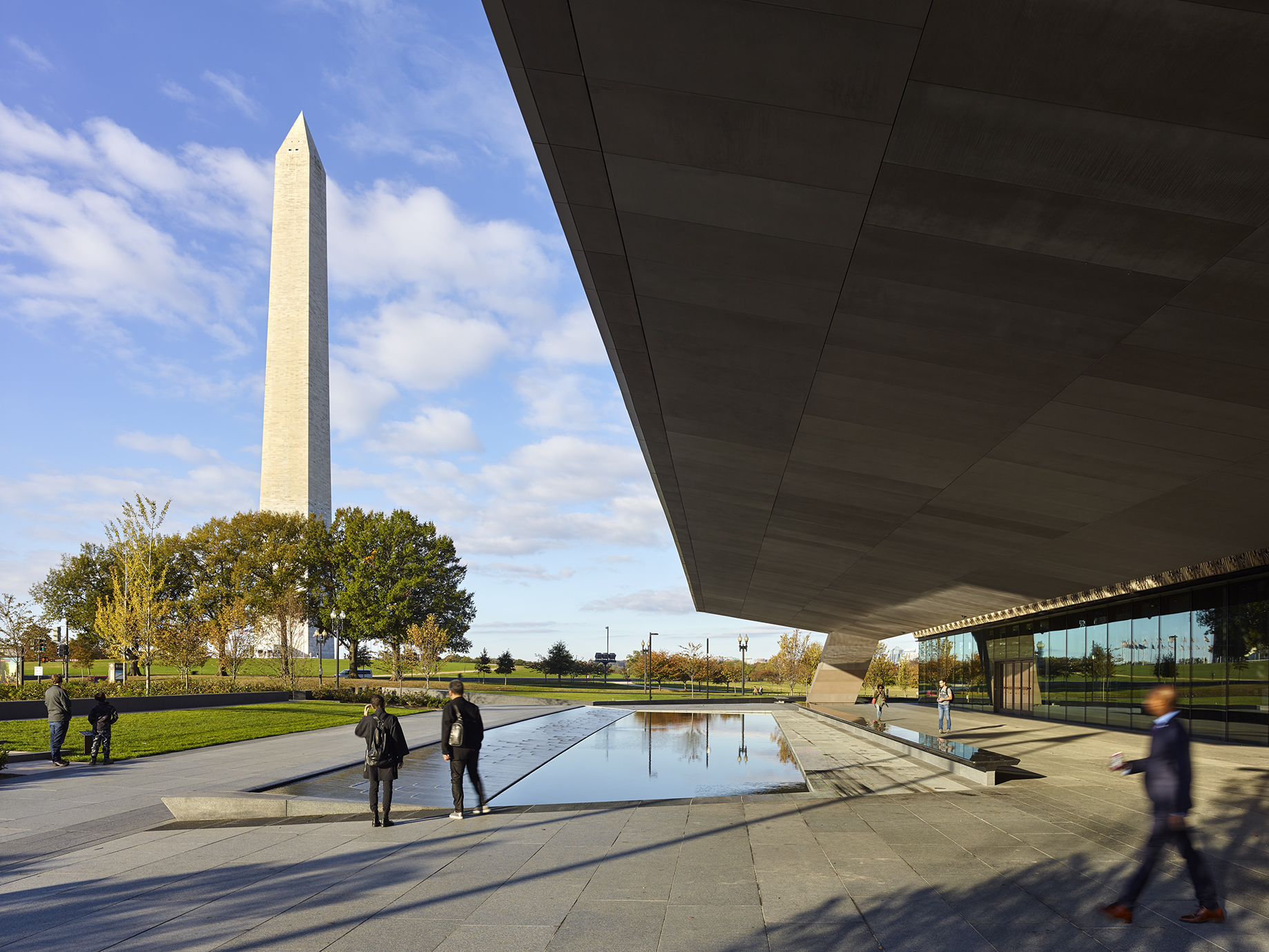
Located on the National Mall’s last buildable parcel, the museum is positioned at the transition point between the highly ordered geometry of the mall and the pastoral grounds surrounding the Washington Monument. Responsive to both conditions, the building footprint is symmetrical, relating to the classical language of the mall. Conversely, the site design mimics the organic, curved pathways of the grounds.
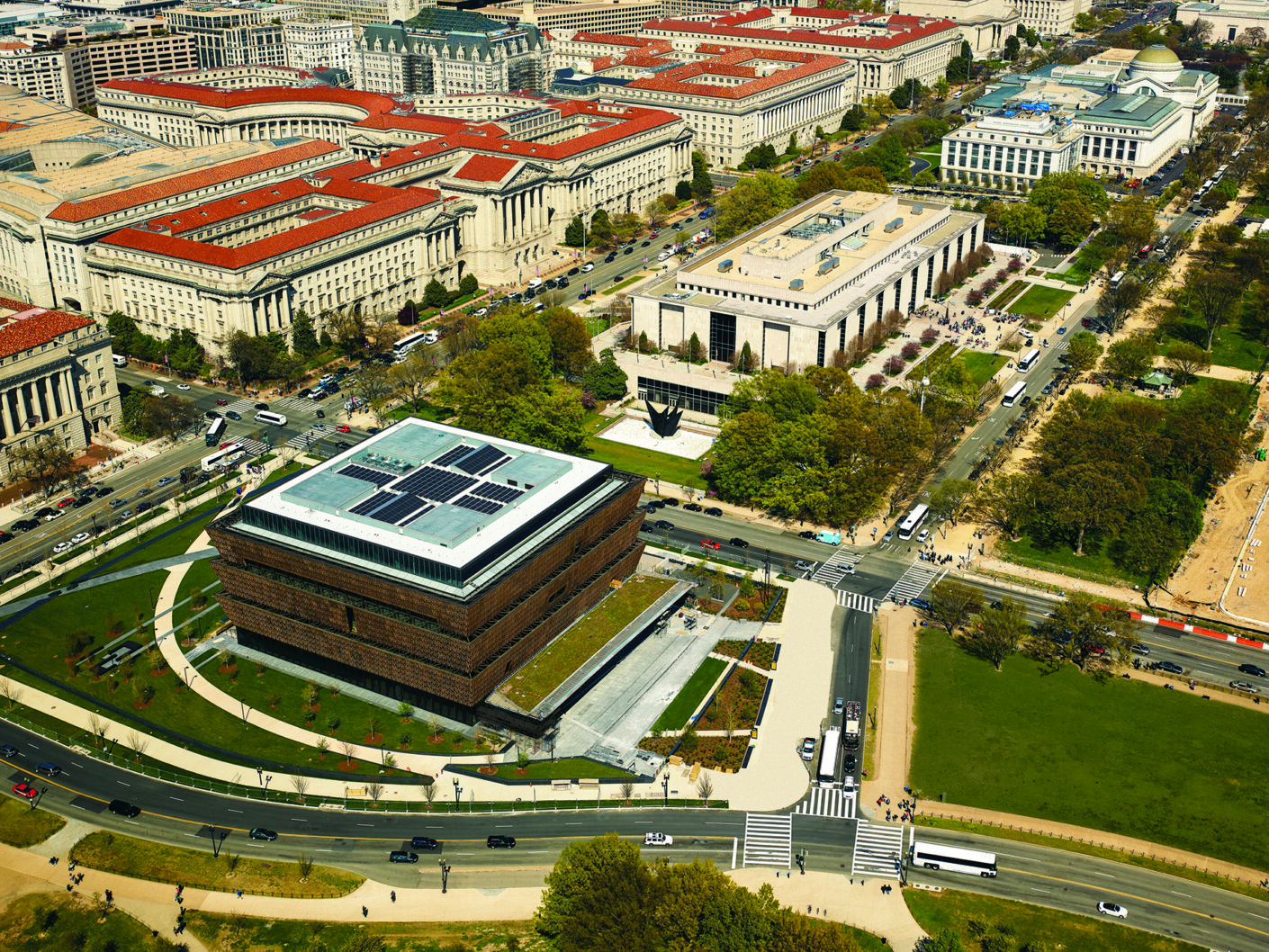
Freelon Bond—a collaboration between The Freelon Group (now Perkins&Will) and Davis Brody Bond—provided comprehensive programming and pre-design services to the Smithsonian Institution from 2007 to 2009, which laid the groundwork for the museum’s design. Freelon Bond’s Master Facilities Plan included visitation estimates, audience research, public engagement, collections storage planning, general museum requirements, an exhibition master plan, and sustainability and accessibility goals. Freelon Bond also provided a facility program, which established quantity and quality of spaces, visitor flow, spatial sequencing, and engineering and security goals. The resulting 1,200-page guidebook—which was submitted to the Smithsonian Institution as a key deliverable—established the museum’s design parameters and ultimately paved the way for the landmark structure we now see gracing the National Mall. In April 2009, the Freelon Bond team expanded, becoming Freelon Adjaye Bond/SmithGroup, or FAB/S.
The design and construction of the nearly 400,000-square-foot museum, was one of the largest and most complex building projects in the U.S. when it was built. With 60 percent of the structure underground, designers and engineers had to create a continuous retaining wall around the perimeter of the site—extending 65 feet down at its maximum height—to secure the building’s foundation in the marshland below Washington, D.C.

